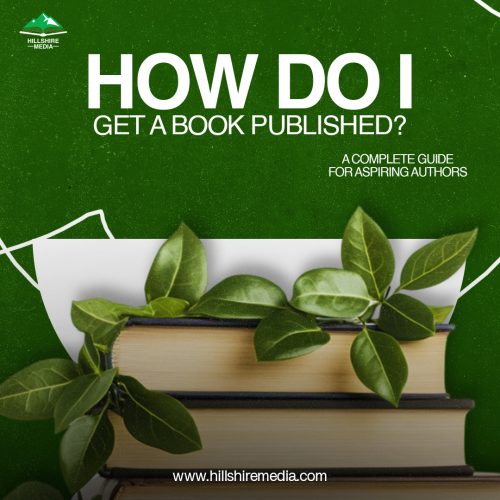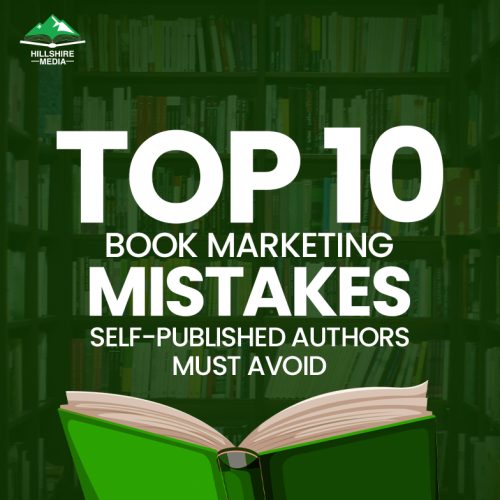Introduction
Publishing a book is an exciting and fulfilling journey, but it can feel overwhelming if you don’t know where to start. Whether you’re a first-time writer or an experienced author looking to publish your next book, navigating the publishing world requires careful planning and decision-making. The path you choose will influence your book’s success and impact your writing career.
Quick Answer: To get your book published, choose the right publishing route, write and edit a high-quality manuscript, submit it to publishers or literary agents, or self-publish, and then focus on marketing your book to your audience.
Let’s dive into each of these steps and explore how you can successfully publish your book.
Step 1: Choose Your Publishing Path
Before you start writing, it’s important to decide which publishing route is best suited to your needs. The choice will influence how much control you have over your book, how much time it will take to publish, and how much you will earn.
1. Traditional Publishing
In traditional publishing, you submit your manuscript to publishing houses. If accepted, they handle all aspects of editing, design, printing, and marketing, giving you the benefit of professional support.
Pros:
- Professional editing and design
- Established distribution networks
- Increased credibility in the market
Cons:
- The process can be competitive and time-consuming
- Less creative control
- Requires working with a literary agent
2. Self-Publishing
Self-publishing gives you complete control over the entire process, from writing and editing to distribution and sales. Platforms like Amazon KDP, IngramSpark, and Smashwords make self-publishing accessible and easy.
Pros:
- Full creative control
- Higher royalties (up to 70%)
- Faster to market
Cons:
- You handle everything (editing, cover design, marketing)
- Limited marketing support
- Financial investment for professional services
3. Hybrid Publishing
Hybrid publishing combines elements of traditional and self-publishing. You pay for certain professional services like editing, but retain more control over the rights and royalties of your book.
Pros:
- Professional support with more control
- Faster publishing process
- More royalties than traditional publishing
Cons:
- Upfront costs for services
- Less exposure than traditional publishing
Step 2: Write a High-Quality Manuscript
The quality of your manuscript is the most important factor in getting your book published. Whether you plan to approach a traditional publisher or self-publish, your manuscript needs to be compelling, well-written, and polished.
Writing a Strong Manuscript
Start by focusing on your book’s core message. For fiction, create engaging characters and a strong plot. For non-fiction, make sure your research is thorough and your arguments are clear and logical.
Editing and Proofreading
Once your manuscript is complete, it’s time for editing. Self-editing is the first step, but professional editing can elevate your book to the next level. A professional editor can help with structure, grammar, and tone.
Beta Readers
Before you submit your manuscript or publish it, consider sharing it with beta readers. These readers can provide constructive feedback, help identify issues you might have missed, and offer suggestions for improvement.
Step 3: Create a Winning Book Proposal (For Traditional Publishing)
If you’re pursuing traditional publishing, you will need to create a book proposal. This is a crucial document that serves as a pitch to literary agents and publishers. A winning proposal can make the difference between acceptance and rejection.
What Should a Book Proposal Include?
- Synopsis: A brief summary of your book, focusing on its main themes and target audience.
- Chapter Outline: An overview of the chapters and what each will cover.
- Author Bio: A description of who you are, your writing background, and why you’re the right person to write this book.
- Market Analysis: Information about your book’s target audience and why your book will appeal to them.
- Marketing Plan: A brief plan on how you intend to promote your book once it’s published.
Step 4: Submit to Literary Agents or Publishers
Once your manuscript and book proposal are ready, it’s time to submit them to literary agents or publishers.
Approaching Literary Agents
Most traditional publishers only accept manuscripts through literary agents. Research agents who specialize in your genre and submit a personalized query letter. Be sure to follow each agent’s submission guidelines carefully.
Submitting to Publishers
Some smaller publishers accept unsolicited manuscripts. If you choose to submit directly to a publisher, make sure to follow their specific submission guidelines.
Step 5: Self-Publishing Your Book
If you’ve chosen self-publishing, you have control over every aspect of the publishing process, from formatting to distribution.
Choosing a Platform
Popular self-publishing platforms include Amazon KDP, IngramSpark, and Barnes & Noble Press. Each platform offers different services, royalties, and distribution options, so it’s important to choose the one that fits your needs.
Formatting and Cover Design
Ensure your book is properly formatted for both e-books and print. Self-publishing platforms often provide free tools, but you might want to hire a professional. A professional cover is also crucial for attracting readers.
Royalties and Pricing
With self-publishing, you get to set the price of your book. Platforms like Amazon KDP offer up to 70% royalties depending on the price and distribution options. Choose a pricing strategy that fits your goals and audience.
Step 6: Marketing and Promotion
Once your book is published, the next step is marketing and promotion. Here are some strategies to help your book gain visibility:
Build Your Author Brand
Start by creating an author website. Include information about your book, an author bio, and a blog to keep your readers engaged. Optimize your website with SEO strategies like keyword-rich content and meta tags to help it rank in search engines.
Leverage Social Media
Use platforms like Instagram, Twitter, and Facebook to promote your book. Regular posts, book snippets, and behind-the-scenes content can help you engage with potential readers and build a loyal following.
Get Reviews
Encourage readers to leave reviews on Amazon and Goodreads. Positive reviews increase your book’s credibility and make it more visible to other readers.
Email Marketing
Start an email newsletter to keep readers updated on new releases, promotions, and events. Offer free content or discounts in exchange for signing up.
FAQs
Q1: How long does it take to get a book published?
The time it takes to get your book published depends on the publishing method you choose. Traditional publishing can take anywhere from 12 to 18 months, while self-publishing can be done in as little as a few weeks.
Q2: What are the benefits of self-publishing?
Self-publishing gives you full control over the entire process, from editing to distribution. It also offers higher royalties and allows you to publish your book faster.
Q3: How can I market my self-published book effectively?
Focus on building an author platform through social media, engaging with readers, and seeking reviews. Utilize email marketing and paid advertising for additional reach.
Q4: What’s the difference between traditional publishing and self-publishing?
Traditional publishing involves working with a publisher who handles editing, design, and distribution. Self-publishing allows you to publish independently, maintaining full control over the process.
Conclusion
Publishing your book is a rewarding but challenging journey. Whether you choose traditional publishing, self-publishing, or a hybrid model, the key to success lies in writing a high-quality manuscript, understanding your publishing options, and having an effective marketing plan.
By following the steps outlined in this guide, you’ll be well on your way to becoming a published author. Stay patient, continue refining your craft, and don’t forget to market your book to reach the right audience. Best of luck with your publishing journey!
Call-to-Action (CTA)
Ready to publish your book? Learn how Hillshire Media helps authors publish professionally and reach a wider audience. Contact us today for a consultation and start your publishing journey!



